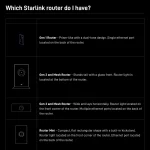New UK 4G Emergency Services Network Faces Possible Delay
A new report claims that the Government’s £1.2bn Emergency Services Network (ESN), which will be delivered by mobile operator EE using 4G technology (supported by Motorola Solutions and KBR), could be facing a significant delay of several years before achieving completion.
At present the police, fire and other emergency services make use of the Motorola-owned Airwave network, which is believed to cost the UK around £3bn and harnesses TETRA (Terrestrial Trunked Radio) technology. The TETRA network is slow (dialup like data speeds) and expensive, but it also delivers wide voice coverage. Nevertheless in 2015 the government decided to replace it with a 4G solution, which was due to finish by December 2019.
Unfortunately it hasn’t all been plain sailing and last year the Public Accounts Committee warned that the ESN “seems unlikely” to meet its target date for delivery, with the finger of blame being pointed at challenges with achieving the desired level of coverage (e.g. how it will operate on underground rail systems and other tedious areas), software/hardware readiness and concerns about possible cost overruns (here).
Advertisement
Fast forward to this month and the CEO of Motorola Solutions’, Greg Brown, recently said: “We now believe the Airwave contract will be extended by five or more years” (an agreement is expected to be finalised within the next few weeks or months). Such an extension could end up costing anything from around £360m to £475m per year.
Today The Register claims to have seen an official update from the programme, which is currently under review (an official update is expected in July 2018). This predicts “significant changes to the structure and delivery [of the ESN]” and notes that the government has already started “reductions of contractor support“.
A Home Office spokesperson said:
“This a complex project which will provide the emergency services with the most advanced communications system of its kind anywhere in the world. We keep the delivery of ESN and the continued use of Airwave under constant review. We have not made any decisions about extending relevant contracts.
We will have a clearer picture of delivery timescales once the ongoing review of the Programme is complete.”
Apparently two options are now being considered. The first suggests only deploying the 4G network for data and retaining Airwave for voice, at least until the 4G side is proven ready to go it all alone. The second allegedly suggests a complete shutdown of the new ESN, at least until an unspecified future date (i.e. get the technology sorted properly first).
The new system is a radical departure from existing ESN solutions and is not yet in use nationwide anywhere else in the world. In the end going 4G for the ESN might not end up saving much money, at least not for awhile. The government has previously said that won’t make the switch until ESN is truly ready.
Advertisement
We should point out that the ESN will have its own separate setup alongside EE’s commercial 4G network.
Mark is a professional technology writer, IT consultant and computer engineer from Dorset (England), he also founded ISPreview in 1999 and enjoys analysing the latest telecoms and broadband developments. Find me on X (Twitter), Mastodon, Facebook, BlueSky, Threads.net and Linkedin.
« O2 Criticism – EE Defends Plan to Launch UK 5G Mobile in 2019


















































Comments are closed